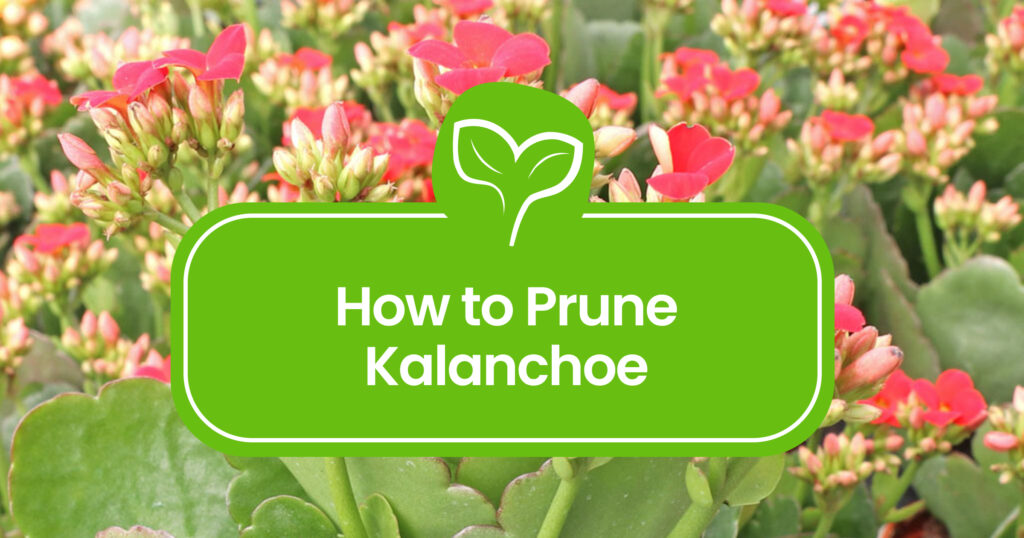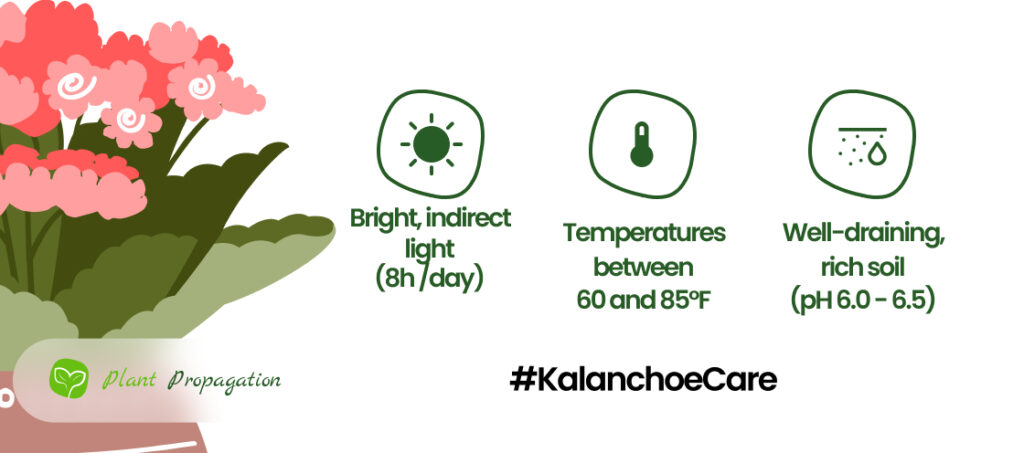
Welcome to the world of vibrant kalanchoe plants! If you’re looking to enhance the beauty of your garden or indoor space, you’ve come to the right place. In this guide, we’ll show you how to prune Kalanchoe the right way, unlocking the secrets to boosting growth and ensuring your plants thrive. Let’s dive in!
Why Prune Kalanchoe
Pruning can help to boost the overall health and aesthetics of your kalanchoe. By pruning, you’re giving your plants the opportunity to grow stronger, look more appealing, and prevent potential diseases. The benefits are numerous, and as we delve into the specifics, you’ll understand why this practice is a game-changer for your kalanchoe.
Best Time to Prune Kalanchoe plants
Getting the timing right with kalanchoe is pretty important, and thankfully, not difficult: During the blooming season, pinch back spent flowers and dead parts, and do the more severe pruning after the blooming is done for the whole year. The specific timing depends on the variety, but usually, they bloom at the end of winter, or during spring.
The tools you’ll need
Before we get our hands dirty, let’s talk tools. Having the right equipment is key. However, you won’t need a big arsenal for pruning Kalanchoes: just grab a clean pair of scissors (or shears), put on your gloves, and you are good to go.

How to Prune Kalanchoe
Now, the exciting part—learning how to prune your kalanchoe! We’ll take you through a step-by-step guide to ensure you’re using the correct techniques. Whether it’s general pruning, fine-tuning during the blooming season, or post-blooming strategies, we’ve got you covered. Watch your kalanchoe transform as you apply these proven methods.
Pruning during the Blooming Season
When your kalanchoe is showing off its pretty blooms, give it some extra love with the right pruning tricks. Here’s a simple guide for the everyday gardener:
- Get rid of old flowers ASAP: If a bloom looks past its prime, just pinch it off. Not only does it make your plant look better, but it also tells the kalanchoe to make more blooms.
- Trim those tall flower stems: When you take off old blooms, grab some pruning shears and snip back the tall stems to a couple of leaves down. It helps your plant grow nice and full.
- Tidy up the messy bits: If you spot any sad-looking leaves or stems, cut them off close to the base. It’s like decluttering your kalanchoe, making room for fresh growth.
Pruning after the Blooming Cycle
Alright, your kalanchoe just finished its blooming show, and now it’s time for a bit of post-blooming care. Here are some simple steps:
- Trim the tall folks: After the grand blooming finale, grab your pruning shears and give those tall guys a trim. Get rid of all the flower stalks to prep your kalanchoe for the next big performance.
- Shorten the stems: Don’t be shy about it—cut each stem back by up to a third of its length. This helps your kalanchoe gear up for a strong, healthy encore next season. Pause, step back, and make sure it’s looking good overall.
- Shape it up close to the leaves: When you’re cutting, aim to be about half an inch (13 mm) away from a leaf node. Find a leaf node that points the way you want the stem to grow, snip at a 45-degree angle, and watch new growth head in that direction.
- Give it a new home if needed: Kalanchoes are slow growers, but if your plant’s been a star and bloomed for several seasons, it might be time for a bigger pot.
Aftercare
Pruning isn’t the end of the story—it’s the beginning of a new chapter. Here are some tips for you:
- Hydration is key: Give it a good drink, but make sure not to drown it. It needs a slightly damp soil.
- Let there be light: Kalanchoe needs light, indirect light. Find a sunny spot where it can soak up those rays without getting scorched.
- A little boost: After about a week, your plant could use a half-strength, balanced fertilizer to give it the nutrients it needs to bounce back and thrive.

Conclusion
Congratulations on mastering the art of pruning kalanchoe! By implementing these techniques, you’ve taken a significant step towards ensuring the health and vitality of your plants. As you reflect on your pruning journey, here are the key takeaways to remember:
- Prune for health & looks: It’s not just about aesthetics—pruning plays a crucial role in promoting the overall health and vigor of your kalanchoe plants.
- Prune during or after blooming: Whether it’s during the blooming season or after the blooming cycle, timing your pruning efforts ensures optimal results.
- Use clean tools: Having the right tools at your disposal makes the pruning process smoother and more effective.
- Aftercare can help: Don’t forget to provide post-pruning care, including proper hydration, adequate light, and occasional fertilization, to support your plants’ continued growth and vitality.
Frequently Asked Questions
When is the best time to prune kalanchoe?
The best time to prune kalanchoe is after it has finished blooming for the year; remove all flower stalks to prepare it for optimal growth. If your plant appears stretched or leggy post-pruning
Should I cut back my Kalanchoe?
Cutting back taller parts of your Kalanchoe after it is done blooming can help keep it tidy and focus its energy on new growth.
How do you prune a leggy Kalanchoe?
To prune a leggy Kalanchoe, just trim back the long, thin stems with clean cuts just above a leaf node. This promotes new growth and helps rejuvenate the plant for a healthier and more compact appearance.
How do you make Kalanchoe bushy?
To encourage a more bushy look for your Kalanchoe, pinch back the new growth regularly with clean scissors.
